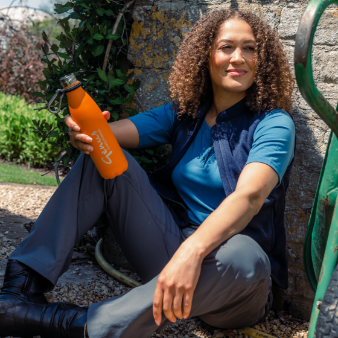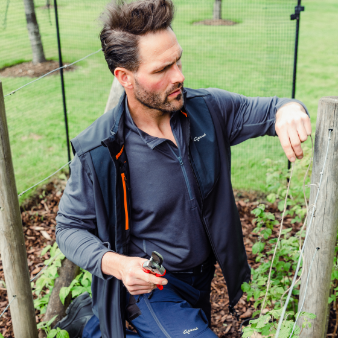Tell us about your journey into horticulture.
Growing up surfing the coastline of Cornwall nurtured my desire to be immersed in nature in my work, which naturally translated into horticulture, and I have recently completed my Master of Horticulture award with the RHS. My role as Head Gardener at the Barbara Hepworth Sculpture Garden in St Ives takes one day per week and the rest of the time I look after gardens around the coastline of Cornwall.
What attracted you to the Barbara Hepworth Sculpture Gardens?
The garden has a unique 'sense of place’: it has a ’secret garden’ feel, being enclosed by high walls and mature planting, but with glimpses out over the roof tops, church tower, to the sea and bay beyond. Hepworth herself described the garden as a "sort of magic”. You go through what was once her home, to come out in to the lushly planted, subtropical garden that is Hepworth’s creation and vision: she positioned the sculptures and plants, stating in her will that the garden should be open to the public. My favourite place is the greenhouse; steeped with history, yet a timeless horticultural delight. It is filled with tropical climbers, succulents and cacti; some of which are from Hepworth’s time and over 45 years old.
What was Barbara’s vision for the garden and how do you keep it alive?
Hepworth planted six of the eight (now) mature trees, forming a living ceiling, that includes a pear, cherry, gingko, copper beech and magnolia. Dappled light filters through to the mostly evergreen planting and sculptures below, creating the calm and contemplative atmosphere that Hepworth so carefully curated. We work from archival photos to maintain historical authenticity. A rare biennial called florist’s cineraria (Pericallis x hybrida ‘Stellata’) features regularly. This plant was lost from the garden when I began working here. However, while unavailable commercially, I was lucky to find a small population surviving in a local garden and have now re-introduced the cineraria, which self-seeds around, lighting up the woodland planting, in May and June, with deep indigos and violets, through to magentas, pinks and white.
Any other future plans for the garden in our changing climate?
Our changing climate demands an adapted approach to heritage garden management. Building soil organic matter and humus, through the regular addition of good quality compost will improve water holding capacity as well as enhancing disease resistance and nutrient availability as well as sequestering carbon back into the soil. Hydrangeas, camellias and beech trees are already needing supplementary watering, but luckily Hepworth used many drought tolerant and Mediterranean plants including Teucrium fruticans, and olearias.





